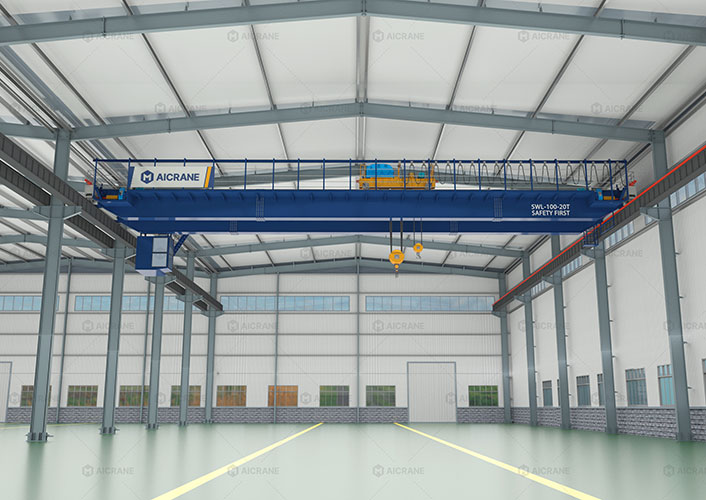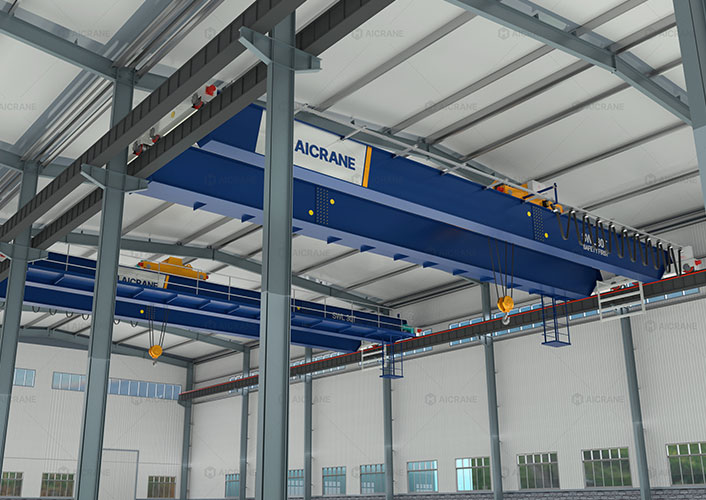Customizing an overhead crane is essential for aligning the equipment with your specific lifting and handling needs. However, customization can quickly drive up the cost if not managed carefully. For many businesses, especially small to medium-sized enterprises, finding a balance between tailored features and financial constraints is crucial. The good news is that you can customize your overhead crane without going over budget – provided you approach the process with careful planning, clear priorities, and the right supplier.
This guide explores practical strategies for cost-effective overhead crane customization that enhances functionality while keeping expenses under control.

Understanding the Basics of Overhead Crane Customization
Overhead cranes come in many configurations, such as single girder, double girder, top-running, and underhung models. Depending on the industry – manufacturing, metallurgy, warehousing, power generation, or shipbuilding – the lifting requirements can vary significantly.
Customization typically involves adjustments or additions to the following:
-
Span and lifting height
-
Load capacity
-
Work duty classification (A3-A8)
-
Trolley and hoist type
-
Control systems (pendant, radio, or cabin)
-
Safety features (overload protection, anti-sway technology)
-
Material handling attachments (magnets, grabs, C-hooks, etc.)
-
Environmental adaptations (dust-proofing, explosion-proofing)
Every added feature or adjustment can affect the final overhead crane price. So, how can you get what you need without exceeding your budget?
Step 1: Define Your Operational Requirements Clearly
The first step in cost-effective customization is clarity.
Before speaking to any supplier, gather the following information:
-
Maximum and average load weight
-
Frequency of crane usage
-
Type of materials being lifted
-
Building dimensions (length, width, ceiling height)
-
Indoor or outdoor application
-
Required lifting speed and traveling speed
-
Environmental factors (humidity, temperature, dust, chemical exposure)
Clearly defined requirements prevent overspending on unnecessary features and ensure you get a crane that performs optimally.

Step 2: Prioritize Essential Custom Features
Not all customizations are created equal. Identify which features are must-haves versus nice-to-haves.
For example:
-
If you’re lifting delicate materials that can’t swing, anti-sway control might be essential.
-
If your crane is used for general warehouse movement with light loads, basic pendant control may suffice over more expensive radio controls.
By prioritizing core needs, you can allocate your budget toward meaningful upgrades and skip those with minimal impact on performance.
Step 3: Choose the Right Crane Configuration from the Start
Selecting the correct crane type and configuration at the beginning can minimize the need for excessive customization.
Here are a few cost-effective considerations:
-
Single girder cranes are generally less expensive and easier to install than double girder cranes, and they work well for moderate loads.
-
Underslung cranes (suspended from the ceiling) may be more economical in buildings with limited headroom or where floor space is restricted.
-
Modular designs allow for future expansion or upgrades without a complete redesign, helping spread costs over time.
Work with your supplier to identify the most cost-efficient base configuration to match your needs.
Step 4: Consider Cost-Efficient Alternatives
Customization doesn’t always mean starting from scratch. Many manufacturers offer standardized modifications that deliver the performance you need at a lower cost.
Examples include:
-
Pre-engineered hoist-trolley combinations with adjustable speeds
-
Off-the-shelf radio control systems compatible with multiple crane models
-
Modular runway beams that can be extended in the future
-
Use of standard duty hoists with higher lifting speeds for intermittent heavy loads
Also, using locally available structural steel or components can reduce logistics and production costs without compromising on quality.
Step 5: Opt for Scalable or Upgradeable Systems
If your business is growing but the budget is tight, choose components that can be upgraded later. This allows you to customize incrementally.
For example:
-
Install a single hoist now but design the girder for dual hoist support in the future
-
Start with manual control and upgrade to automated systems later
-
Use a basic PLC-ready control panel that can support sensors or AI-based diagnostics down the line
Scalability ensures long-term cost savings and adaptability as your operational demands evolve.
Step 6: Work Closely with a Reliable Supplier
A trusted eot crane supplier can guide you through the customization process efficiently, avoiding costly mistakes. Look for suppliers who:
-
Offer free technical consultation
-
Conduct site assessments (in-person or remotely)
-
Provide 2D or 3D layout drawings before production
-
Are experienced with your industry’s challenges
-
Offer warranty and post-sale support
Some suppliers may also offer value engineering, where they recommend alternative materials or designs to reduce costs without reducing performance.
Step 7: Avoid Over-Customization
Many companies over-customize cranes out of fear of future limitations. While forward-thinking is good, over-customizing often leads to underutilized features and wasted budget.
Here’s how to avoid that:
-
Don’t pay for a 30-ton hoist when you’ll rarely lift more than 15 tons
-
Skip specialized trolleys unless absolutely necessary
-
Avoid extreme lifting speeds unless production cycles demand it
Focus on functionality and reliability, not luxury or the maximum specs “just in case.”
Step 8: Get Detailed Quotations and Compare Options
Once you’ve identified your ideal configuration and features, request detailed quotations from multiple suppliers. Ask for:
-
Itemized pricing (equipment, controls, installation, freight, etc.)
-
Optional upgrade costs
-
Lead time and delivery schedule
-
Cost-saving alternatives
This will help you assess value more effectively than a single lump-sum price.
Conclusion
Customizing your overhead crane within budget is not only possible – it’s smart. The key is to approach the process strategically:
-
Define your lifting requirements
-
Focus on essential features
-
Select the right crane type from the beginning
-
Leverage scalable solutions
-
Avoid unnecessary bells and whistles
-
Work with experienced, transparent suppliers
By doing so, you ensure that every dollar spent enhances safety, productivity, and reliability – without unnecessary financial strain. A customized crane doesn’t have to be expensive. It just needs to be intelligently designed for your application.